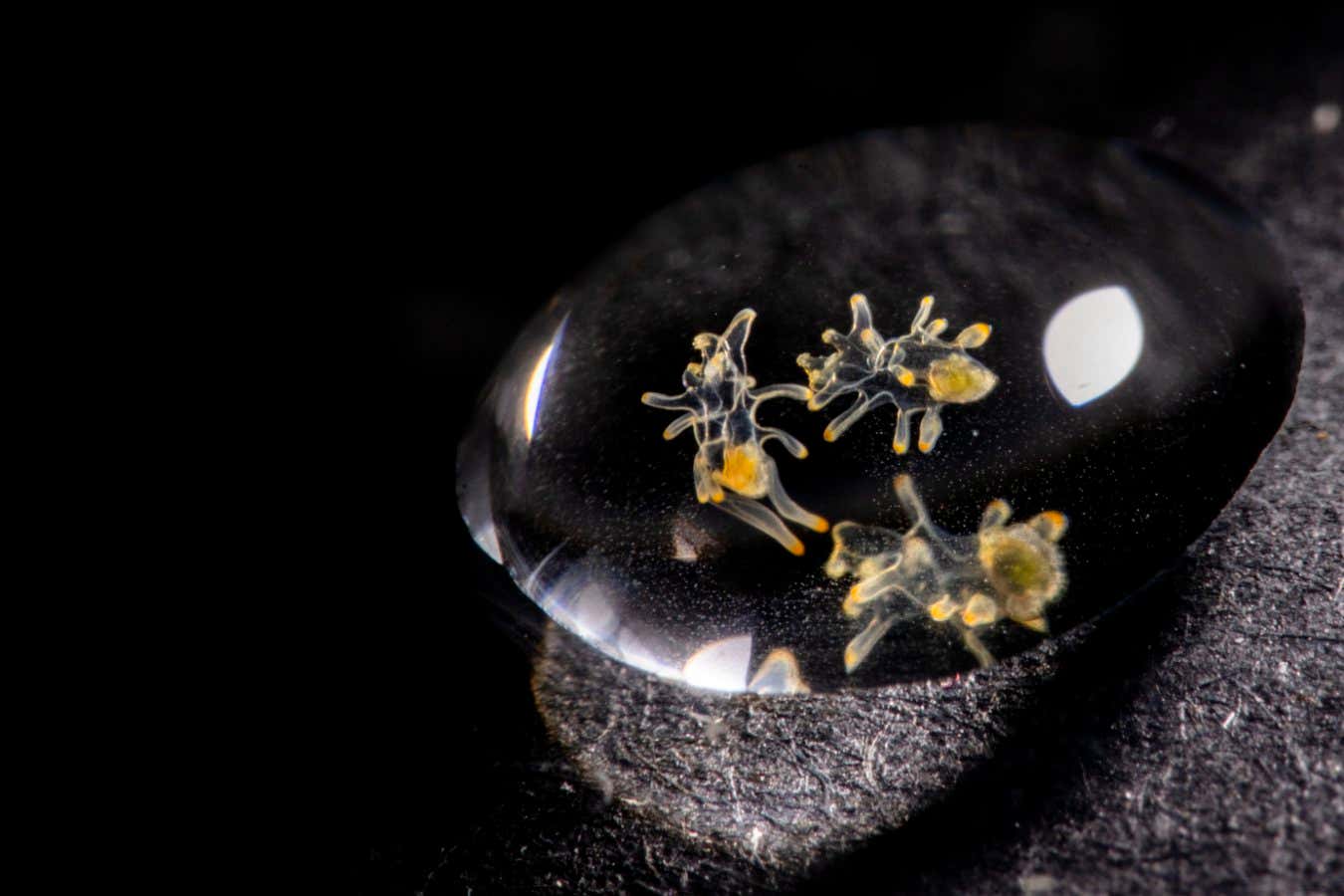
Giant pink sea star larvae resumed their development after being frozen at −200°C
Patrick Webster
For the first time, scientists have successfully cryopreserved sea star larvae and reactivated them – an important milestone that could help re-establish a critically endangered keystone species.
Beginning in 2013, sea star wasting syndrome spread along the west coast of North America, wiping out populations of species including sunflower stars (Pycnopodia helianthoides) and giant pink stars (Pisaster brevispinus). The loss of these predators led to a big expansion of sea urchins, and this contributed to northern California losing 97 per cent of its kelp forest canopy.
Sunflower stars are now functionally extinct in California and intense efforts are under way to raise these creatures for reintroduction to the wild.
When giant pink stars spawned at the Aquarium of the Pacific in Long Beach, California, in January 2025, vials of the two-day-old larvae were shipped to the San Diego Zoo Wildlife Alliance. There, they were submerged in liquid nitrogen and stored at −200°C for the next month before being transported around 700 kilometres north to Sunflower Star Laboratory in Monterey Bay in February.
Next, the giant pink star larvae were carefully thawed and they resumed their development, reaching the stage when they settle on the seabed and change into their juvenile form. “Nobody had ever taken a sea star, frozen it at the larval stage and successfully settled it, which has tremendous implications for their conservation,” says Reuven Bank at Sunflower Star Laboratory.
Sunflower stars play an important role in kelp forest ecosystems
Pat Webster
Being able to raise cryopreserved larvae brings conservation scientists a significant step closer to returning genetically diverse sunflower stars to the waters of California. “The giant pink star has a similar larval cycle to sunflower stars, and we’re moving on to sunflower stars next,” says Bank.
Over the past 15 years, marine ecosystems in the North Pacific have faced a convergence of environmental threats. “When you’re telling the story of climate change, marine heat waves and ecosystem collapse, it’s grim,” says Andrew Kim at Sunflower Star Laboratory. “But with the Pycnopodia recovery, there’s a sliver of hope.”
Topics:
Source link : https://www.newscientist.com/article/2483376-cryopreserved-sea-star-larvae-could-enable-vital-species-to-recover/?utm_campaign=RSS%7CNSNS&utm_source=NSNS&utm_medium=RSS&utm_content=home
Author :
Publish date : 2025-06-17 20:00:00
Copyright for syndicated content belongs to the linked Source.